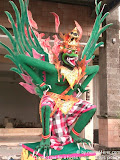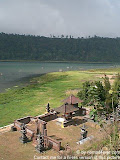 If you are a diver, chances are that you are interested in Ship Wrecks, which scatter the oceans of the 7 seas. Ever since human beings sailed the seven seas, ships went missing due to storms, enemies at war, technical failure or just plain human error.
If you are a diver, chances are that you are interested in Ship Wrecks, which scatter the oceans of the 7 seas. Ever since human beings sailed the seven seas, ships went missing due to storms, enemies at war, technical failure or just plain human error.
The Bermuda triangle is said to be one of the most famous areas where ships (and even air planes) went missing; but the waters around Europe have their fair share of ship wrecks as well, even though it can be difficult due to strong currents and very cold temperatures to dive, let’s say, Scapa Flow, where the remains of the German Kriegsmarine were sunk after World War I.
Ship Wrecks are part of all oceans
I surely don’t have to mention the Titanic, which was found in the Atlantic Ocean only in the nineties and who’s fascination remained strong over nearly 100 years and spawned interest and movies (Leonardo di Caprio anyone?) alike.
The Mediterranean is famous for medieval and ancient ship wrecks of the Old Greek, the Romans, the Egyptians and others; with Gold Diggers and Treasure Hunters scanning the seas for old amphores or other loot. And just imagine the gold galleons which endless conquerors and pirates like Pizarro, Cortes, Francis Drake didn’t bring back from South and Latin America and lost on the way due to storms or other perils.
 Sport Divers however should only visit wrecks, don’t touch a thing or take souvenirs except photos and leave only bubbles.
Sport Divers however should only visit wrecks, don’t touch a thing or take souvenirs except photos and leave only bubbles.
My first wreck was the sunken ferry “Salem Express” in Safaga/Egypt in the Red Sea, which drowned 1991 most of its passengers (180 survivors out of 470) who were afraid of manning the life saving boats and insisted on praying instead. You could even sit on the rear engine propeller of the ferry in about 15 metres of depth and take a nice photo
Wrecks in Asia
Asia is a nice area for wreck diving as well. Especially the 2nd World War helped divers to get more and more interesting dive sights in the form of countless wrecks in all its waters. Just think of the Battle at Midway, Pearl Harbour, Subic Bay in the Philippines and all the thousands islands across the region with plenty of reefs and Typhoon zones.
 Earlier this week I discovered the easiest divable wreck in the world with some German Friends from Singapore. Okay, the wreck is actually not so hidden and well documented by other bloggers here or here – but it really is a true gem.
Earlier this week I discovered the easiest divable wreck in the world with some German Friends from Singapore. Okay, the wreck is actually not so hidden and well documented by other bloggers here or here – but it really is a true gem.
USS Liberty at Tulamben
You don’t even have to dive it – snorkeling works as well – it gets even better!
Just jump from the pebble beach at Bali’s north-eastern coast at Tulamben and swim out for 15-25 metres and look down. Besides the swarms of interesting small and medium-sized fish – you can see the wreck lying on the ground, starting in just 5 metres of depth. The USS Liberty is about 120 metres in length and was torpedoed by a Japanese Submarine in 1942, but is sitting at it’s spot only since 1963, when an eruption of Bali’s volcano Gunung Agung let it slip from its resting place onshore to its present position.
With its 120 metres of length and about 13.000 tons it’s truly a long cargo ship. I just checked my Silent Hunter III and Silent Hunter IV manuals, it’s bigger than a standard C3 Cargo and comes close to the Victory Class of US Cargo Ships. So all in all an impressive sight!
Are you enjoying diving? Do you dive wrecks as well? What was your best wreck dive so far? Please share with the readers of this blog!
or save article to your Facebook with 1 simple click:




April 19th, 2007 at 8:13 pm
This is a nice article
April 20th, 2007 at 1:29 am
Jay Galvin was so kind and sent the following additional information regarding the ‘USS Liberty’, which rests at the north-east coast of Bali. Besides the name, I may have to correct the displacement as well, it’s only about 6,211 tons, which put her into a category of between C2 and C3:
USAT Liberty Glo
USAT Liberty Glo, a United States Army Transport, was built at the Hog Island emergency shipyard in Philadelphia during World War I, but was completed after the November 1918 armistice. Shortly after the U.S. entry into World War II, Liberty Glo was torpedoed and beached on the island of Bali and is now a popular dive site.
Early history
Hog Island Hull No. 517 was laid down as SS Scooba on June 12 1918 but by the time it was launched on June 14 1919 it had been renamed SS Liberty Glo. Delivered to the U.S. Shipping Board on August 2 1919, she was a cargo ship of 5,000 gross tons and 7,825 deadweight tons, 394 feet (120 m) long and 54 feet (16 m) beam. Liberty Glo was the 36th Hog Islander built and one of twelve built as “Type B” troop carriers. (Liberty Glo was not a Liberty Ship, which were a similar concept of vessel built during World War II.)
On December 5 1919, the Liberty Glo struck a mine 10 mi (19 km) northwest of Terschelling on the coast of the Netherlands. The explosion broke the hull in two from waterline to waterline at number two cargo hold, the deck plates and bulwarks holding the ship together so that, despite the heavy sea running, the captain was able to get it ashore with no casualties and save most of the US$2,000,000 cargo. Captain Stousland paid the following tribute to the Hog Island product:
She broke close to the rivets but they remained intact, notwithstanding the fact that the number three bulkhead is now the bows and against it the breakers hammered without mercy to my great surprise it remained intact. The Liberty Glo was built as good as any ship afloat and how she hung together after being cut in two was most remarkable. [1]
Sinking
The redesignated USAT Liberty Glo, remeasured at 6,211 tons, was bound from Australia to the Philippines on January 11 1942 with a cargo of railway parts and rubber for the war effort when she was torpedoed by Japanese submarine I-166 about 10 mi (19 km) southwest of Lombok Strait (08°54′S 115°28′E). U.S. destroyer USS Paul Jones (DD-230) and Dutch destroyer HNLMS Van Ghent took the damaged ship in tow attempting to reach Singaraja, the Dutch port and administrative centre for the Lesser Sunda Islands, on the north coast of Bali. However she was taking too much water and so was beached on the eastern shore of Bali at Tulamben so that the cargo and fittings could be salvaged.
Liberty Glo was one of 58 Hog Islanders that were casualties in World War II.
In 1963 the tremors associated with the eruption of Mount Agung caused the vessel to slip off the beach, and she now lies on a sand slope in 30 to 100 feet (9 to 30 m) of water, providing one of the most popular dives off Bali.
Dive operators commonly misname the wreck “USS Libertyâ€, and it has also been incorrectly referred to as a Liberty Ship, which were a similar concept of vessel built during the Second World War.
April 20th, 2007 at 9:50 am
Guten Morgen Herr Chris,
How do you manage to contact me about this update on your blog?
Care for a link exchange?
Stef from KL, Malaysia
April 27th, 2007 at 9:42 pm
Thank you for this. I keep wondering what the fascination is with this kind of thing. I think it’s the desire to connect with those things we have lost — to reconnect with our histories. Somehow. Whatever it is, it certainly continues to captivate us.
April 30th, 2007 at 5:19 pm
Nice Article !
September 2nd, 2007 at 10:35 pm
Hi…
Your photo of the ship GTR-5 is not the “USAT Liberty Glo” that sunk in Bali. GTR-5 is the designation of the “USS Liberty” a spy ship or “General Technical Research” that was attacked by Israel…
September 4th, 2007 at 1:27 am
[…] wreckman: Hi… Your photo of the ship GTR-5 is not the “USAT Liberty Glo” that sunk in Bali. GTR-5… […]
September 4th, 2007 at 1:33 am
[…] wreckman: Hi… Your photo of the ship GTR-5 is not the “USAT Liberty Glo” that sunk in Bali. GTR-5… […]
October 12th, 2008 at 8:02 pm
[…] cocktail, while surfing the internet to get into the right mood. Swim with dolphins or visit sunken wrecks on the bottom of the ocean. Ride a horse on a beach during sunset or sunrise. You name it, Bali has […]
November 20th, 2011 at 1:52 am
L-)
The picture of the USS Liberty which goes with your divingstory about Tulamben is the wrong vessel. The USS Liberty which you are showing is a US spyvessel GTR5 (general technical research) which operated for NSA and CIA in the period of 1960-1970. Actually it has been under attack by the Israeli airforce during the 1967 war when it was eavesdropping near the Egypt coast. Many members of the crew have been killed and the vessel was badly damaged.
rgrds, Leo